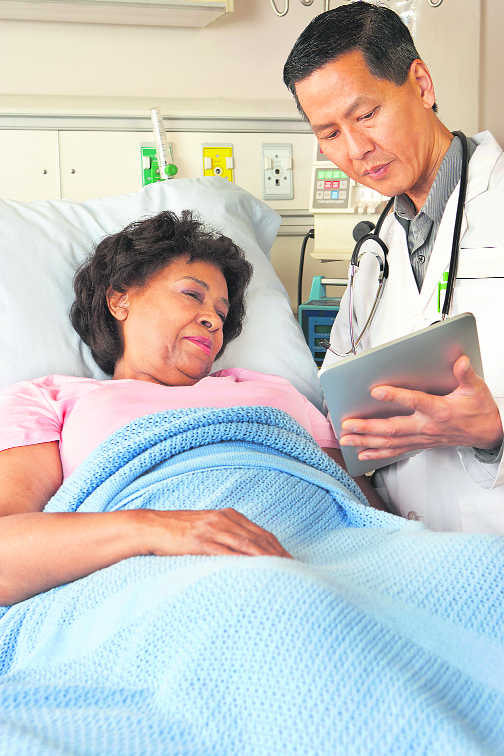Sexist stereotypes: Doctors ignore women's pain
Research shows hospital staff take women’s pain less seriously, spent less time treating them and are more likely to wrongly diagnose physical pain as ‘just emotional’. While the gender pay gap has been widely acknowledged, an even more sinister yet seldom-discussed picture is emerging that a gender pain gap may exist too. Women’s pain is taken much less seriously by doctors than men’s is.
This gender pain gap has a number of serious and far-reaching implications; including that women in acute pain are left to suffer for longer in hospitals, they are more likely to be misdiagnosed with mental health problems due to misogynistic stereotypes that women are ‘emotional’ even when clinical results show their pain is real and they are consistently allocated less time than male patients by hospital staff due to men’s complaints being seeing as more authoritative and important.
Research has found that in A&E, when women and men present the same severity of abdominal pain, men wait an average of 49 minutes before being treated, while the average wait for women is 65 minutes. Similarly, women are consistently prescribed less pain-relieving medication, even when controls for weight are applied.
One reason for this gender disparity may be that doctors wrongly perceive women are being more irrational and emotional than men, and therefore dismiss their complaints about pain as being all in the mind rather than having a physical basis. Clinical studies have also found that doctors are more likely to think women’s pain is caused by emotional issues rather than physical causes, even in the presence of clinical tests which show their pain is real. Similarly, researchers J. Crook and E. Tunks found in their study ‘Women With Pain’ that women with chronic pain conditions are more likely to be wrongly diagnosed with mental health conditions than men and prescribed psychotropic drugs, as doctors dismiss their symptoms as hysterics.
Conversely, men are seen as more rational and when they say they are feeling acute pain, doctors take their symptoms seriously as having physical cause rather than assuming an emotional basis.
This gender divide in diagnosis has serious implications for treatment, meaning that men and women can receive different care in hospitals for the same conditions and symptoms. Researcher Karen Calderone found that when men and women have the same symptoms, women are more likely to be given sedatives as treatment, instead of pain-relieving drugs. This suggests they are perceived as being more ‘anxious’ than truly in pain and doctors focus on prioritising returning women to a ‘calm and rational’ state above relieving their actual pain.
This may also indicate how society feels uncomfortable with ‘emotional’ women and seeks to stop their chaotic behaviour through sedation, above actually addressing the cause of their distress. This means women may be left in severe pain for longer than men as sedatives may make them appear calmer on the outside while continuing to feel pain acutely. This can mean they stay in extreme discomfort for longer periods and could mean serious symptoms related to other conditions may go unnoticed and undiagnosed as they are rendered too docile by the sedatives to alert doctors to them.
Similarly, research elsewhere has found that male patients are consistently given more time and attention from medical professionals than female patients with the exact same symptoms. In a test case to examine this gender bias conducted by D. McDonald and R. G. Bridge in ‘Gender Stereotyping and Nursing Care’, nurses were given vignettes with imaginary patients, listing their supposed symptoms and medical history. The nurses were then asked to calculate how much time the patient would require for treatment and emotional support. Male patients were consistently allocated more time, even when they had the same symptoms and background as female patients.
Another disturbing trend in medical research has found that the more ‘attractive’ medical staff find a patient, the less treatment they receive. In the research paper ‘Beautiful Faces in Pain’ T. Hadjistavropoulo found that due to a “strong ‘beautiful is healthy’ stereotype”, doctors subconsciously assume people who look ‘better’ on the outside, are healthier and subsequently require less treatment. As sexism in staffing hierarchies means men are more likely to be the ones in senior positions making decisions about patients, and men are predominantly heterosexual, is it possible that they underestimate women’s pain due to this ‘attractiveness’ bias.
The medical world has long prided itself on bein impartial and objective due to its reliance on hard, scientific facts. But an emerging body of research suggests that sexism may also be perpetuated even in hospital wards and operating rooms and a gender pain gap is a real and unignorable barrier to women accessing healthcare. — The Independent









